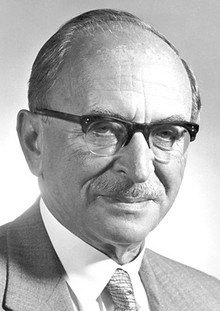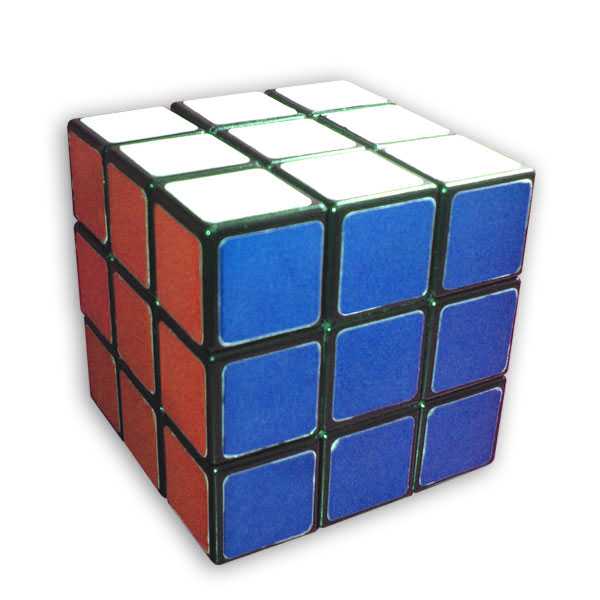Dennis Gabor - the person whose name our College bears
 Dennis Gabor (June 5th, 1900, Budapest – February 9th, 1979, London) was a scientist, an electrical engineer, a Nobel Prize winner inventor, a fellow of the Royal Society (1956), an honorary member of the Hungarian Academy of Science (1964), a Commander of the Order of the British Empire (1970), an associate fellow of the National Academy of Sciences (USA) (1973), and also an honorary D.Sc. of the Southampton (1970), Delft (1971), Surrey (1972), City (1972), London (1973) and Columbia (1975) Universities.
Dennis Gabor (June 5th, 1900, Budapest – February 9th, 1979, London) was a scientist, an electrical engineer, a Nobel Prize winner inventor, a fellow of the Royal Society (1956), an honorary member of the Hungarian Academy of Science (1964), a Commander of the Order of the British Empire (1970), an associate fellow of the National Academy of Sciences (USA) (1973), and also an honorary D.Sc. of the Southampton (1970), Delft (1971), Surrey (1972), City (1972), London (1973) and Columbia (1975) Universities.
In his book The electron microscope, written in 1944, he analised optical lens aberrations and indicated the possibility of „seeing” certain atomic particles. In his research activity he discovered several principles about the plasma state of low-pressure neon gas, mercury and sodium discharges. In the years following the second world war, he dedicated his work to the development of the electron microscope, and to the movement of free electrons in outer space.
His journey in research lead from electron and ion physics through electron microscopes to optical studies and information theory, while, in between, giving birth to holography – a discovery that preceded the scope of its technical realisation by 20 years. From 1949 Dennis Gabor was teaching electronics at the Imperial College in London. In 1958 he was promoted to professor of electron physics. He created a Wilson cloud chamber, in which the velocity of the particles became measurable.
He also made a holographic microscope, a universal analogue computer, a flat thin colour television tube and a new type of thermionic converter. His theoretical studies are most significant in the field of communication theory.
His inaugural address as professor of the Imperial College was about inventions in electronics and their influence on civilisation. The basic idea of his book is:
„WE CANNOT PREDICT THE FUTURE BUT WE CAN INVENT IT.”
In his works, he often reflects upon the basic opportunities of individual and social development in an era of developed technology.
In 1971 he received Nobel Prize in Physics, for inventing holography and for implementing its opportunities of application. At his Nobel-prize presentation speech he drew the attention to further opportunities in implementing holography, since the density of information stored in a hologram is by far higher than the one stored in traditional computer memories. In addition, it is also quicker to access the information stored in them, while at the same time, even the smallest part of an appropriately prepared hologram contains the whole information that had been evenly spread on it.
Dennis Gabor bequeathed his library to the American Academy in Rome; it was later given as a donation to our college where it has been preserved since 1993.
Dennis Gabor, a scientist and a great man, is an emblematic idol for all students, teachers and researchers of our College.
Leó Szilárd (February 11th 1898, Budapest – May 30th 1964, La Jolla, California), physicist who conceived the nuclear chain reaction. A student of Albert Einstein and Max Planck. He was studying engineering at the Technical University of Budapest. Feeling insecure during the reign of the White Terror in 1919, left for Berlin, Germany.
He was studying engineering at the Technical University of Budapest. Feeling insecure during the reign of the White Terror in 1919, left for Berlin, Germany.
Szilárd was a part of the Manhattan Project, which sought to transform atomic energy for military purposes. He conducted research at the University of Chicago from 1942 to 1945. He worked with Enrico Fermi to build the first nuclear reactor. Szilárd changed by seeing the destructive force of the atomic bomb and joined the Emergency Committee of Atomic Scientists. This international organization wanted to prevent further military use of atomic energy. For the rest of his life, Szilard worked on nuclear safety and arms control. He started the Council for a Livable World in 1962, which is still dedicated to reducing the threat posed by nuclear weapons.
János Neumann (December 28th 1903, Budapest – February 8th 1957, Washington D.C.), mathematician who made important contributions in quantum physics, set theory, computer science, economics and virtually all mathematical fields. He received his Ph.D. in mathematics from the University of Budapest at the age of 23. He simultaneously learnt chemistry in Switzerland,
He received his Ph.D. in mathematics from the University of Budapest at the age of 23. He simultaneously learnt chemistry in Switzerland,
Neumann was the father of game theory and published the classic book Theory of Games and Economic Behavior with Oskar Morgenstern in 1944. He conceived the concept of “MAD” (mutually assured destruction), which dominated American nuclear strategy in the Cold War. He worked in the Theory division at Los Alamos along with Hans Bethe and Victor Weisskopf during World War II as part of the Manhattan Project to develop the first atomic weapons. Neumann dashed all hope of developing a deterministic quantum mechanics until his work was overturned by David Bohm, J.S. Bell, and others. He held a strong belief in the role of the observer in creating the collapse of the quantum wave function.
Ede Teller (January 15th 1908, Budapest – September 8th 2003, Stanford, California), theoretical physicist, known colloquially as ‘the father of the hydrogen bomb’. Teller studied physics at Leipzig University, Germany. He worked as a physicist at Los Alamos Scientific Laboratory during World War II. Teller also helps the formation of a diarahkannnya laboratory for more than two years in the 1950s. He then became assistant director of physics until his retirement in 1977.
Teller studied physics at Leipzig University, Germany. He worked as a physicist at Los Alamos Scientific Laboratory during World War II. Teller also helps the formation of a diarahkannnya laboratory for more than two years in the 1950s. He then became assistant director of physics until his retirement in 1977.
Teller worked on the Manhattan project at Los Alamos, New Mexico (1943-1946). The project was successfully pursue the development of the atomic bomb. The bombs were then dropped on Hiroshima and Nagasaki, which until today has not been any more since then.
Ernő Rubik (July 13th 1944, Budapest), inventor, sculptor and professor of architecture. He is best known for the invention of mechanical puzzles including Rubik's Cube, Rubik's Magic, Rubik's Snake and Rubik's 360.

He graduated from the Technical University, Budapest in 1967 as an architectural engineer. From 1971 to 1975 he worked as an architect, and then became a professor at the Budapest College of Applied Arts. In the early 1980s, he became editor of a game and puzzle journal called ...És játék ("...and games"), then became self-employed in 1983, founding the Rubik Stúdió, where he designed furniture and games. In 1987 he became professor with full tenure; in 1990 he became the president of the Hungarian Engineering Academy. At the Academy, he created the International Rubik Foundation to support especially talented young engineers and industrial designers.
Rubik is a member of the USA Science and Engineering Festival's Advisory Board.
